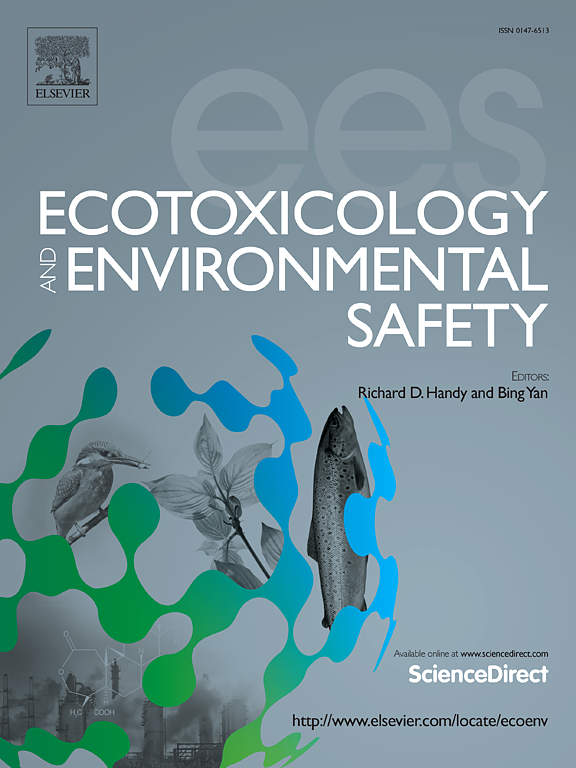Regulation of antibiotic resistance gene rebound by degrees of microecological niche occupation by microbiota carried in additives during the later phases of swine manure composting
IF 6.2
2区 环境科学与生态学
Q1 ENVIRONMENTAL SCIENCES
引用次数: 0
Abstract
The occupation of microecological niches (MNs) by bacteria carrying lower antibiotic resistance genes (ARGs) has been demonstrated an effective strategy for reducing ARGs in compost, thereby mitigating the associated land use risks. In this study, humus soil (HS), matured compost (MC), and their respective isolated microbial agents (HSM and MCM), which exhibit varying abundances of ARGs, were introduced as additives after the thermophilic phase to investigate their influence on ARG removal and the mechanisms underlying effective MN occupation. The addition of HS resulted in the most favorable outcomes, including the highest carbon degradation, minimized nitrogen loss, and an 83.16 % reduction in ARG abundance during the later composting stages. In comparison, ARG rebound levels were 61.77 %-285.33 % across other treatments and 729.23 % in the control. Distinct dominant bacterial genera and potential ARG-host bacterial communities were observed, which varied with different additives and contributed to MN occupation dynamics. The addition of the HS additive intensified competition among non-host bacteria, and diversified the interactions both between genes and between bacteria. These changes suppressed horizontal gene transfer (HGT) mediated by mobile genetic elements (MGEs) and altered the abundance and composition of both dominant and non-dominant potential host species. Furthermore, it shifted the relative importance of key physicochemical parameters, collectively enhancing ARG removal during composting. These findings elucidate the mechanisms by which MN adjustments contribute to ARG reduction, providing actionable insights for designing composting strategies that mitigate environmental ARG dissemination risks more effectively.
求助全文
约1分钟内获得全文
求助全文
来源期刊
CiteScore
12.10
自引率
5.90%
发文量
1234
审稿时长
88 days
期刊介绍:
Ecotoxicology and Environmental Safety is a multi-disciplinary journal that focuses on understanding the exposure and effects of environmental contamination on organisms including human health. The scope of the journal covers three main themes. The topics within these themes, indicated below, include (but are not limited to) the following: Ecotoxicology、Environmental Chemistry、Environmental Safety etc.

 求助内容:
求助内容: 应助结果提醒方式:
应助结果提醒方式:


